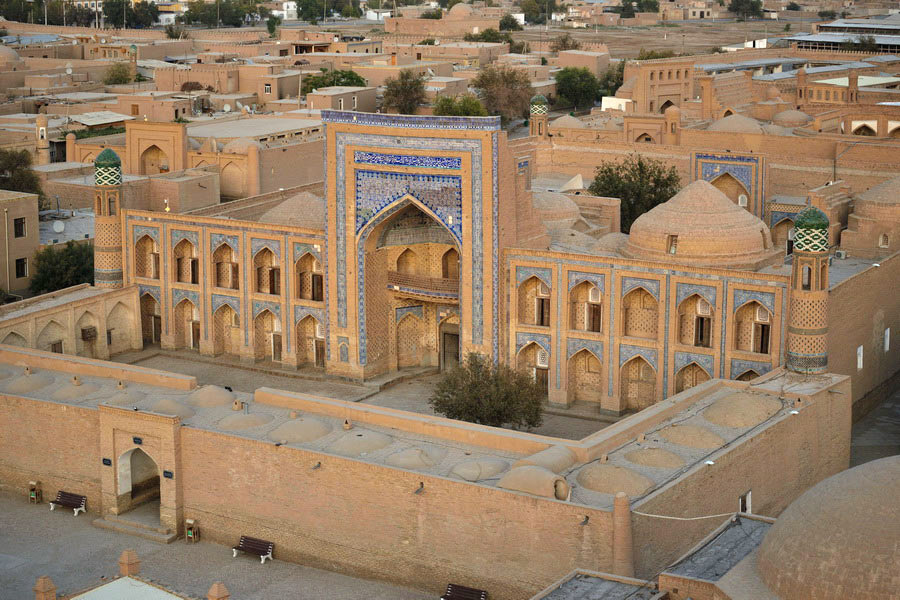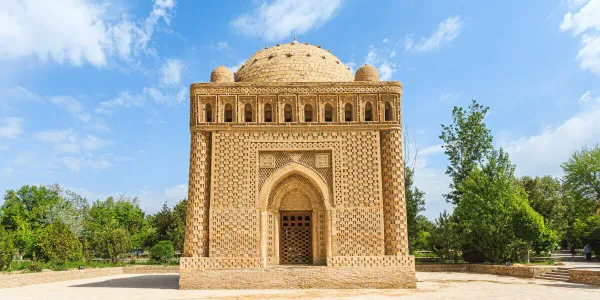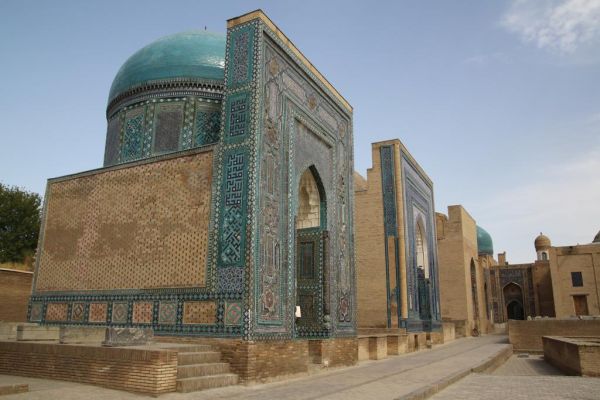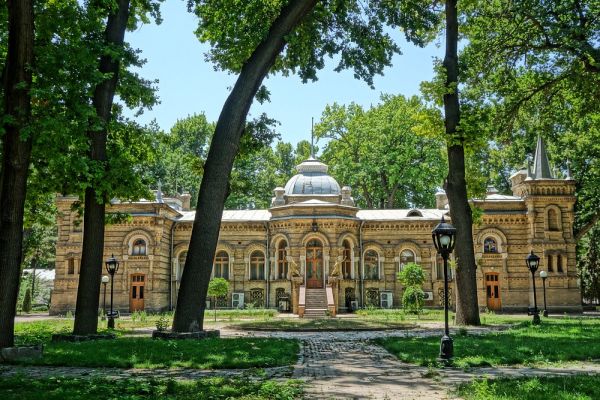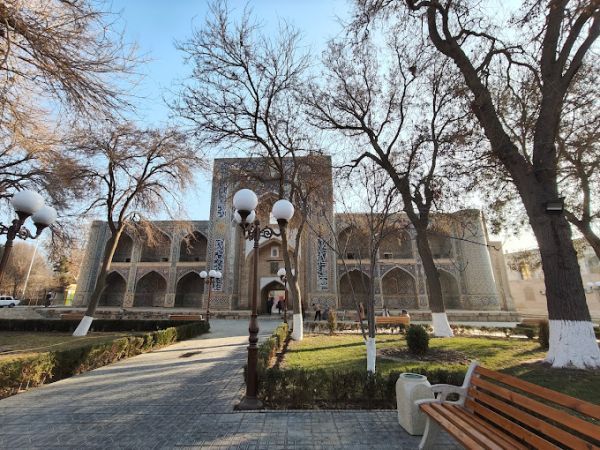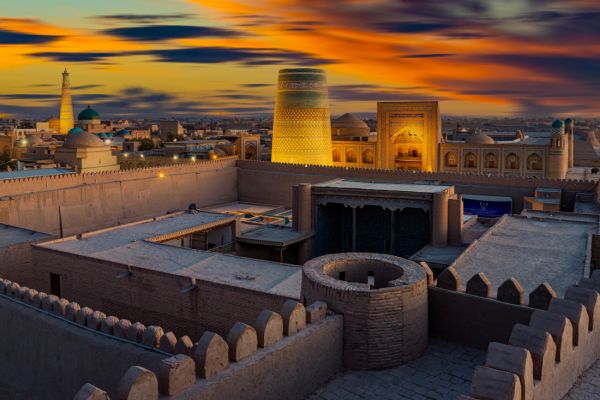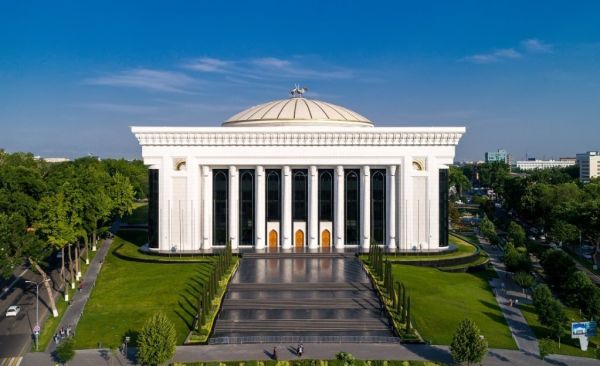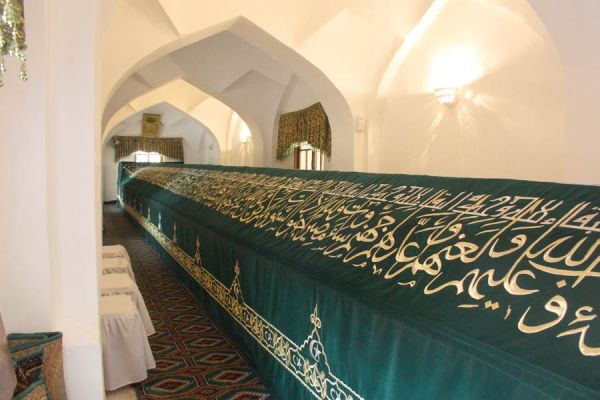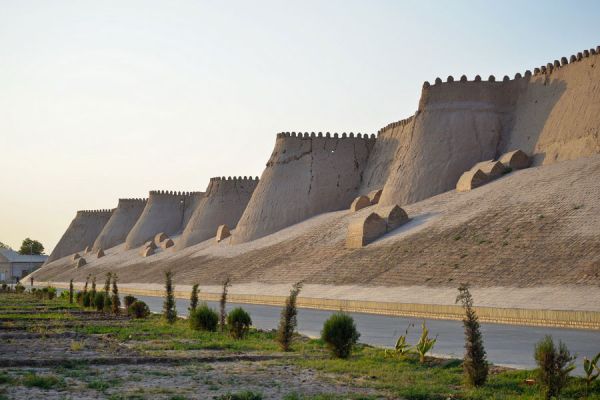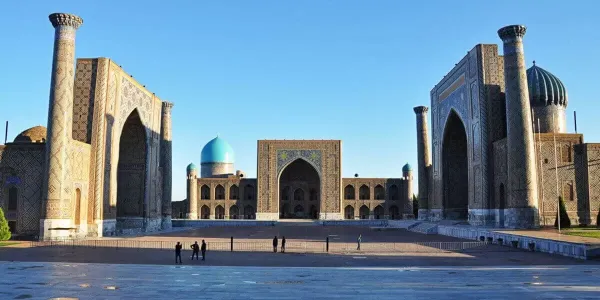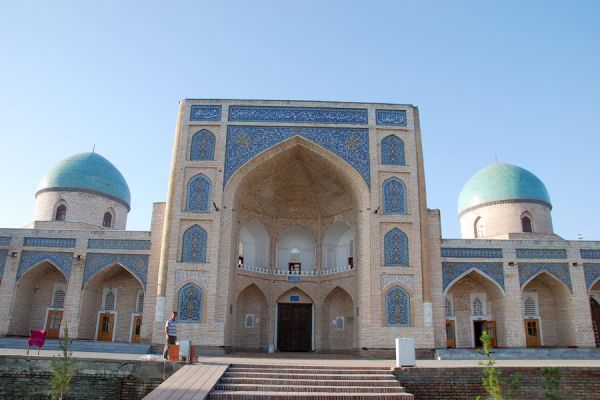Muhammad Rahim Khan Madrasah in Khiva
Muhammad Rahim Khan Madrasah is part of the complex of attractions of the ancient city of Ichan-Kala in Khiva. One of the most famous and significant Khiva madrasas was built by Muhammad Rahim Khan near the Kunya Ark citadel in the last quarter of the 19th century. Khan became famous as an enlightened ruler who patronized people of science and poets.
History
During his reign, Rahimkhan was one of the most enlightened and educated representatives of his dynasty. During the heyday of his rule, the khanate carried out many works on urban improvement, various political and economic reforms, but most importantly— reforms in the field of education. All this has led to the opening of several new schools in Khiva with new teaching methods — not only traditional religious sciences, but also secular ones: mathematics, literature, astronomy, geography.
At the same time, the construction of one of the largest educational institutions in Central Asia began in Khiva, which eventually received its name in honor of the ruler Said Muhammad Rahimkhan II. The madrasah was built in 1871-1876 by his order.
At Muhammad Rahim Khan madrasah, students studied religion, the Koran, theology, mathematics and language sciences, composed poems and found out the truth through scientific debates, in which Muhammad Rahimkhan himself sometimes even participated. The educated ruler also wrote poetry under the pseudonym Feruz. He was the first to carry out lithographic publishing of books throughout Central Asia.
The building of the Muhammad Rahim Khan Madrasah was completely renovated in 1994. Nowadays, the ancient educational institution includes a large hall, a gym and the Khorezm Literary and Historical Museum in a warm mosque, which tells about the culture and history of the Khanate of Khiva.
Architecture
The building of the Muhammad Rahim Khan Madrasah in Khiva is two-storied, with a high entrance portal to its territory leading to a four-bay courtyard. The entrance to the Muhammad Rahim Khan madrasah from the street is through a courtyard enclosed by a solid wall and lined with one-story-high hujra cells. This place is the outer courtyard of the madrasah. There is also another courtyard, which is very cozy and surrounded by an arched row of hujras. Inside there was a central structure with two floors, with an impressive portal on the side of the facade. Guldasta turrets are located at the corners of the building.
The domed tops are decorated with green mosaics. The facade is dominated by traditional blue and white majolica. The decoration of the tympanums (fields on the pediment that look like a semicircle or triangle), as well as the columns, is done in the same way. Elaborate brickwork figuratively decorates the ivan ceiling above the main entrance and the vaulted tops of the loggias. In the courtyard there were four iwans (ceilings supported by rows of pillars).
This madrasah stands out among other similar educational institutions for its size. The complex of buildings includes a winter and summer mosque, a lecture hall (darshona), a bookstore, a canteen, and hujras. As a patron of scientific works, a philosopher and poet, and a champion of literary art, Muhammad Rahim Khan arranged comfortable classrooms inside the building and provided the library with the necessary valuable manuscripts.
The Muhammad Rahim Khan Madrasah has 76 single-storey rooms for students, designed to accommodate 152 people. A special feature of the living quarters is a room attached to each cell, designed for various household needs.
